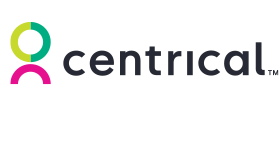The 2024 in Focus series highlights some of the insights our customers and prospects have shared with us about what they’re focusing on for 2024.
In this first installment, we’ll talk about why increased retention is on operation leaders’ minds for 2024, and how they can make it happen.
Attrition is a major (and costly!) pain point for contact centres. Therefore, it makes sense that these organizations want to focus on retaining their existing workforce, no matter their stage in the employee journey.
But how?
To answer that question, let’s take a look at why people leave (and the costs when they do).
Why Employees Leave
Some attrition, such as layoffs, is inevitable. But in this article, we’re focusing on voluntary attrition. (According to a recent survey, 71% of our respondents reported that turnover was a challenge.)
And when employees voluntarily leave, it’s not always about money, benefits, or scheduling. Below are some of the most cited reasons for leaving:
- A poor pre-boarding or onboarding experience
- Job shock
- Inadequate training/empowerment
- Feeling unmotivated and disengaged
- Not feeling aligned with their teams/goals
- Burnout
- Lack of a career path
The Cost of Attrition
Most companies tend to lose, on average, about 18% of their workforce every year. But for contact centres and BPOs, that number is closer to 50-60%!
And the costs add up. According to McKinsey, depending on the role type, location, and other factors, the average cost of attrition can come to $10k-20K per agent.
But the monetary costs aside, there are other high costs to attrition, including:
- Low morale
- Increased workload (and burnout)
- Brain drain (loss of experience and institutional knowledge)
8 Tips for Retaining Employees in 2024
We’ve just covered the most common reasons that employees leave, and the losses to organizations in the wake of that turnover. Below are a few actionable steps organizations can take to boost their retention rates in 2024:
Post an On-Point Job Description
Employee retention starts before the job candidates interview. Mitigate the risk of job shock with a job description that includes an accurate view of the role, its requirements, and expectations.
Engage During Pre-Boarding
The pre-boarding period is typically a time of low engagement, which increases the risk of first-day ghosting.
Take steps to keep new hires engaged, such as assigning a “buddy” to check in periodically, sending team and manager introductions, and other personalized actions.
Align Employees With Their Goals
Part of setting employees up for success is ensuring they are aligned with their goals. Provide clear expectations, as well as insights into where they are versus where they want to be. This helps guide employees and drive motivation to reach their goals.
Create a Culture of Learning
Regular training and development is a great strategy for employee retention – especially with microlearning.
Microlearning delivers self-paced, “bite-sized” learning modules that reinforce training and fight the forgetting curve. (And creating training and learning materials just became easier than ever.)
Increase Coaching Effectiveness
Supervisors should spend more time coaching employees and less time preparing for development conversations.
By automating the data collection and analysis process to surface actionable insights and recommended next best actions, supervisors are better able to coach continuously, helping everyone involved gain more from sessions.
Map Career Paths
A major reason for voluntary attrition is the lack of a clear progression plan or career path, with veteran employees taking their experience with them.
Providing a visible career path is critical to retaining both headcount and the institutional knowledge that comes with it.
Remember That Your People Are People
Customer expectations are rising, and workloads aren’t getting any smaller, or easier. Supervisors should make sure to take a holistic approach to management with wellness checks.
This can help prevent burnout and strengthen the supervisor-employee relationship by empowering managers to step in before it’s too late.
Gamify Performance (and Other Aspects of the Employee Experience)
The application of game mechanics into a non-game context, gamification taps into intrinsic and extrinsic motivators to keep employees motivated and engaged.
Tying gamification to goals creates a long-term shift in patterns and behaviors that translates into better performance and increased retention.
Ready to level up your retention game in 2024?
This blog post has been re-published by kind permission of Centrical – View the Original Article
For more information about Centrical - visit the Centrical Website
Call Centre Helper is not responsible for the content of these guest blog posts. The opinions expressed in this article are those of the author, and do not necessarily reflect those of Call Centre Helper.
Author: Centrical
Published On: 4th Jan 2024 - Last modified: 9th Dec 2024
Read more about - Guest Blogs, Centrical






 Centrical provides a real-time performance management, microlearning, gamification, coaching, and voice of the employee platform for frontline teams. The solution inspires and personally guides employee success and growth by making every moment actionable.
Centrical provides a real-time performance management, microlearning, gamification, coaching, and voice of the employee platform for frontline teams. The solution inspires and personally guides employee success and growth by making every moment actionable. 








